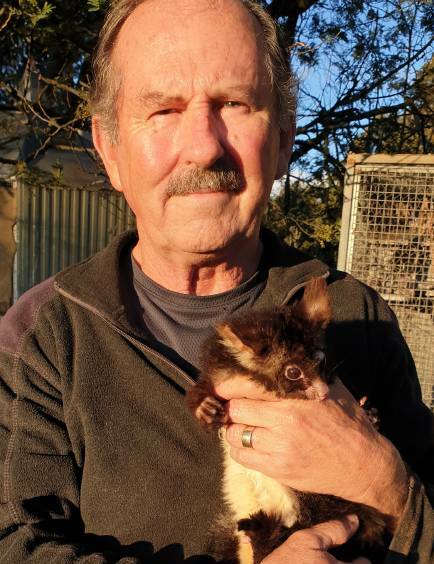
THERE are certain things that the horrors of war prepare you for, and one is caring for injured wildlife that would die if left untreated.
Subscribe now for unlimited access.
$0/
(min cost $0)
or signup to continue reading
Oberon-based John Lyle was a medic with the Australian Army during the Vietnam War and caring for others is at the very core of everything he does.
IN OTHER NEWS:
The war may have been decades ago, but what he learned there helped prepare him to look past the horror of the injury to how the life can be saved.
"It takes a certain type of person to ignore what you see and treat them," he said.
Mr Lyle, one of dozens of native wildlife carers around the region, specialises in macropods such as kangaroos and wallabies.
He also looks after the odd wombat, possum and glider.
At the moment, he's caring for a kangaroo that arrived dripping wet, sedated and bleeding after being rescued from a Lithgow stormwater drain.
The roo's feet are now bandaged from wounds it received trying to escape the drain, and it's eating well and will make a full recovery.
He has cared for native wildlife for the past 21 years and it has been a rollercoaster ride.
"It's the worst job you can do and also the best job you can do," he said.
"You can't put a price on successfully helping an animal so they can go back into the wild and reproduce.
"It's the satisfaction of saving a life, any kind of life."
Mr Lyle is a self-confessed "mother hen" and admits it's bittersweet releasing animals into the wild after he has cared for them for so long.
Some animals only take a few months to recover before being released, but his longest treatment time was two years.
"I worry if they'll be okay. If I haven't done my job properly, they won't survive," he said.
"Once a male eastern grey had been gone for about four or five years and it turned up again on our property."
And how can he recognise a kangaroo when it turns up again? Mr Lyle said it's easy.
"Their facial features are all different; they don't all look the same," he said.
Mr Lyle took delivery of a new tranquilising rifle in 2013 thanks to a great fundraising effort by the residents of Oberon.
He said using the rifle is a lot easier than trying to chase or trap an injured animal.
Mr Lyle spent two years getting his gun licence and registration.
"This has cost a lot of money in itself," he said.
"Getting a tranquilising rifle licence is more complicated than a normal gun licence."
The rifle has been specially made with a double barrel and was imported from Denmark for $5400.
At the time, Mr Lyle thought it was the only one of its type in Australia.
The rifle has different size needles for different animals. Each needle costs $75.
"The gun works using a pressure technique, has a red laser sight and a maximum distance of 60 metres," he said. "It's very easy to use and almost foolproof if you take weather conditions into consideration."
Find out more on Mr Lyle's website Care for Wildlife or make a donation.

